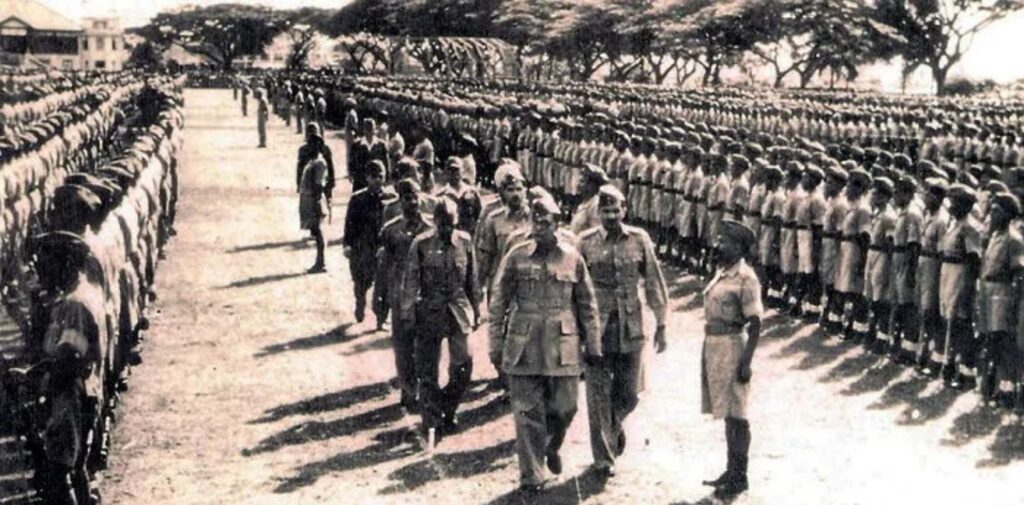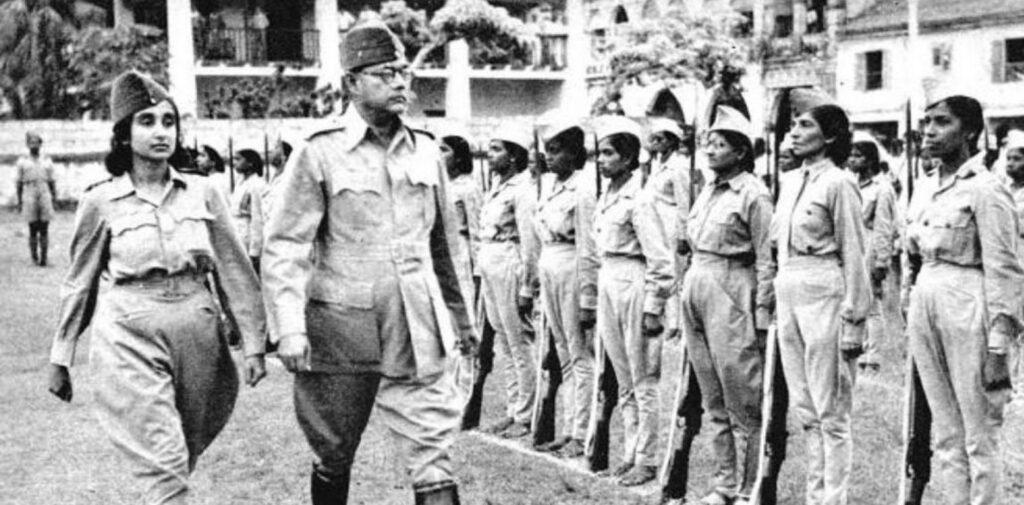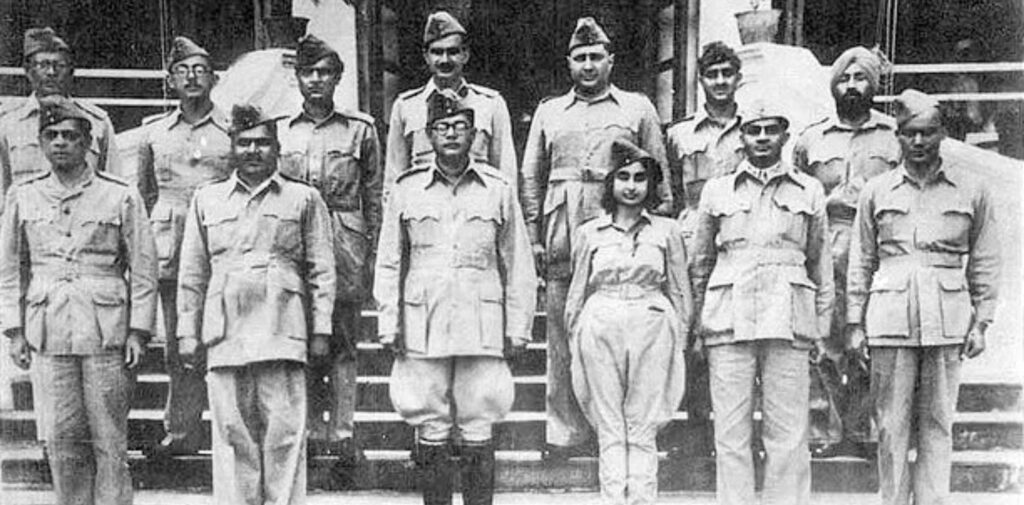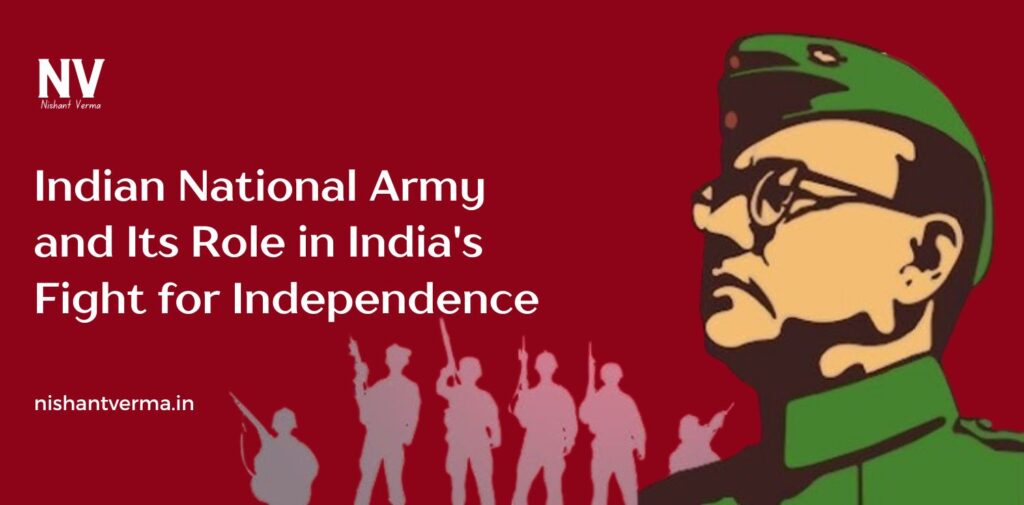The Indian National Army (INA) holds a significant place in India’s struggle for independence. Formed during the period of British colonial rule, the INA was one of the most crucial movements aimed at freeing India from British control. It not only symbolized resistance to British oppression but also united people from different regions, cultures, and religions to fight for a common cause. The INA was not only a military force but also a symbol of hope, courage, and nationalism.
What Was the Indian National Army?
The Indian National Army was a military force organized during World War II with the help of Japan. Its goal was to fight against British rule in India and liberate the nation. The army was formed under the leadership of Subhas Chandra Bose, one of the most passionate leaders in India’s freedom struggle. Although it was a military organization, the INA played a much larger role in inspiring the people of India to rise up against British rule.
Bose’s leadership brought a new energy to the struggle for independence, creating a sense of unity among Indians. His ideology of “Give me blood, and I shall give you freedom” became famous, and his call for action rallied many to the cause of the INA.

Origins of the INA
The origins of the INA can be traced back to 1942, when many Indian soldiers and civilians were tired of the British oppression that had continued for decades. During World War II, the British were already weakened, and many Indians believed that this was the perfect time to challenge British rule.
The first attempt to form an Indian National Army came in 1942, when some Indian prisoners of war (POWs) from the British Indian Army were captured by the Japanese forces in Southeast Asia. These prisoners were initially put in camps in Burma (present-day Myanmar) and later recruited by the Japanese to form an army that would fight against British colonialists. This army was called the Azad Hind Fauj (Indian National Army), and it was formed with the purpose of driving out the British from India.
Initially, the INA was led by Captain Mohan Singh, who was a British Army officer. However, after some disagreements with the Japanese, Singh was replaced by Subhas Chandra Bose in 1943. Bose, who had been in exile, took charge of the INA and transformed it into a force that was not just a military group but a symbol of freedom.
Subhas Chandra Bose and His Leadership
Subhas Chandra Bose was one of the most visionary and charismatic leaders in Indian history. He was an ardent nationalist who believed that independence could only be achieved through strong resistance, including armed struggle. While Mahatma Gandhi and Jawaharlal Nehru believed in non-violent methods, Bose felt that India’s freedom could only be won through force and direct confrontation with the British.
Bose sought support from the Axis powers during World War II, particularly Japan and Germany, believing that they could assist India in its fight for independence. He formed the INA in Singapore, where many Indian soldiers had been captured by the Japanese.
Bose’s leadership was instrumental in creating a sense of unity among Indians, regardless of their caste, creed, or religion. He believed that every Indian, no matter where they came from, should be united under the banner of freedom. Under his leadership, the INA recruited soldiers, including women, from different parts of India and abroad, making it a truly national movement.

Key Battles and Achievements of the INA
Under Subhas Chandra Bose, the INA fought several key battles during the World War II period, though it never managed to defeat the British military. The INA’s most notable military campaign was in the north-eastern regions of India, particularly in Manipur, during the 1944 Burma campaign.
The INA, alongside Japanese forces, fought to free Indian territories from British control. In 1944, the INA launched the famous Imphal-Kohima offensive with the hope of reaching India’s northern borders. However, the offensive was met with heavy resistance from the British, and the INA was unable to make significant progress. Despite this, the bravery and patriotism displayed by the INA soldiers captured the imagination of millions of Indians.
Even though the INA did not succeed in military terms, its efforts in mobilizing the Indian population and challenging British rule were seen as a major turning point in India’s struggle for freedom. The INA had inspired a new spirit of nationalism and resistance, which would continue to grow even after the war ended.
The Role of Women in the INA
One of the most significant aspects of the INA was the involvement of women in the movement. Women were not only supporters but also active participants in the military and organizational efforts of the INA. The most famous of these women were the Rani of Jhansi Regiment, a group of female soldiers who fought alongside men in the army.
Led by Captain Lakshmi Sahgal, these women took part in the INA’s military campaigns, and their bravery and contributions to the movement were widely recognized. The participation of women in the INA helped change the perception of women’s roles in the freedom struggle, showing that women could be as determined and committed as men in the fight for independence.
The INA Trials and Aftermath
After World War II ended in 1945, the British authorities arrested several INA soldiers, including many high-ranking officers, accusing them of treason and collaboration with the Japanese. The famous INA Trials were held in 1945-46, where the British government tried to put INA leaders, including Colonel Prem Sahgal, Colonel Shah Nawaz Khan, and Captain Lakshmi Sahgal, on trial for their role in the rebellion.
The trials sparked widespread protests across India. People from all walks of life came out in support of the INA and its leaders, showing their anger against British rule. These protests were a crucial turning point in the final stages of India’s independence struggle. The British government, realizing the growing support for the INA, eventually decided to release the prisoners and not pursue the trials further.
Although the INA did not achieve its military objectives, it played a critical role in inspiring the masses and turning the tide against British rule. The spirit of the INA, combined with other movements and efforts, contributed significantly to India’s eventual independence in 1947.

The Legacy of the INA
The Indian National Army’s legacy continues to be a source of inspiration for many. It symbolized the courage, unity, and patriotism that led to India’s freedom. Subhas Chandra Bose is remembered as a leader who took bold steps to challenge British imperialism, and his leadership remains a part of India’s history.
Even though the INA did not succeed in military terms, its contribution to the national movement was invaluable. It created a sense of unity among Indians, promoted the idea of self-reliance, and showed that the British were not invincible. The bravery and sacrifice of INA soldiers, including its women fighters, will always be remembered as a symbol of India’s fight for freedom.
Conclusion
The Indian National Army may not have achieved its military goals, but its role in India’s struggle for independence cannot be underestimated. It helped ignite the passion for freedom among millions of Indians and inspired future generations to continue the fight for a free India. Subhas Chandra Bose and the INA’s heroes will always be remembered as some of the greatest freedom fighters in the history of India’s independence movement. The INA’s sacrifices and spirit of resistance will continue to be celebrated as an important chapter in the story of India’s fight for freedom.




